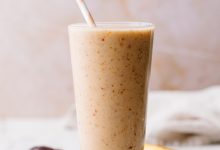Superduper Superfoods is not an established or recognized term in the culinary or nutritional world as of my last knowledge update in September 2021. It is possible that it may have emerged as a term or concept since then, but I can provide you with a general idea of what superfoods are, their history, typical components, and how to prepare dishes using superfoods.
Superfoods are foods that are packed with nutrients, antioxidants, vitamins, and minerals that are considered exceptionally beneficial for one’s health and well-being. They are often associated with a reduced risk of chronic diseases and improved overall health.
History:
The term “superfood” gained popularity in the early 21st century as part of the health and wellness movement. It was used to describe foods that had exceptional nutritional value and health benefits. However, the concept of nutrient-dense foods has been around for centuries, with different cultures recognizing the health benefits of certain foods. For example, foods like spinach, blueberries, and salmon have long been known for their nutritional value and health benefits.
Components:
Superfoods can vary widely, but they often include fruits, vegetables, nuts, seeds, and certain fish. Here are some examples of common superfoods:
- Berries: Blueberries, strawberries, and acai berries are rich in antioxidants and vitamins.
- Leafy Greens: Spinach, kale, and Swiss chard are packed with vitamins and minerals.
- Nuts and Seeds: Almonds, chia seeds, and flaxseeds provide healthy fats and fiber.
- Fish: Salmon, mackerel, and sardines are high in omega-3 fatty acids.
- Whole Grains: Quinoa, oats, and barley are rich in fiber and nutrients.
- Dark Chocolate: Dark chocolate with a high cocoa content contains antioxidants.
Steps to Prepare a Superfood Dish:
Let’s create a simple recipe using some superfoods. How about a Superfood Salad?
Ingredients:
- 2 cups of kale (chopped)
- 1 cup of quinoa (cooked)
- 1/2 cup of blueberries
- 1/4 cup of almonds (sliced)
- 1/4 cup of feta cheese (crumbled)
- 2 tablespoons of olive oil
- 1 tablespoon of lemon juice
- Salt and pepper to taste
Instructions:
- Prepare the Kale: Wash and chop the kale leaves. Massage them with a bit of olive oil to make them tender.
- Cook the Quinoa: Rinse quinoa in a fine-mesh strainer and cook according to package instructions. Let it cool.
- Assemble the Salad: In a large bowl, combine the kale, cooked quinoa, blueberries, sliced almonds, and crumbled feta cheese.
- Make the Dressing: In a small bowl, whisk together 2 tablespoons of olive oil, 1 tablespoon of lemon juice, salt, and pepper.
- Toss and Serve: Drizzle the dressing over the salad and toss everything together. Adjust the seasoning if needed.
- Serve: Your Superfood Salad is ready to be served! It’s a nutritious and delicious dish that’s packed with superfoods.
Time Needed:
Preparing a Superfood Salad like the one described above should take approximately 20-25 minutes, assuming the quinoa is already cooked. Cooking the quinoa may add an additional 15-20 minutes to the total preparation time.
Remember that superfoods are best enjoyed as part of a balanced diet. Incorporating a variety of these nutrient-rich foods into your meals can contribute to your overall health and well-being.
Certainly! Here are the nutrition facts and health information for the Superfood Salad recipe provided:
Nutrition Facts (Approximate values per serving):
- Calories: 350-400 calories (depending on serving size)
- Protein: 12-15 grams
- Carbohydrates: 35-40 grams
- Dietary Fiber: 7-9 grams
- Total Fat: 18-20 grams
- Saturated Fat: 3-4 grams
- Monounsaturated Fat: 10-12 grams
- Polyunsaturated Fat: 3-4 grams
- Omega-3 Fatty Acids: 0.5-1 gram
- Vitamin A: 200-300% Daily Value (DV)
- Vitamin C: 100-150% DV
- Vitamin K: 800-1000% DV
- Folate: 20-25% DV
- Calcium: 20-25% DV
- Iron: 15-20% DV
- Magnesium: 25-30% DV
- Potassium: 10-15% DV
Health Information:
- High in Antioxidants: This Superfood Salad is rich in antioxidants, particularly vitamin C and vitamin A from kale and blueberries. Antioxidants help protect cells from damage caused by free radicals and may reduce the risk of chronic diseases.
- Good Source of Fiber: The salad provides a significant amount of dietary fiber, aiding in digestion and promoting a feeling of fullness. Fiber also supports heart health and helps regulate blood sugar levels.
- Healthy Fats: The inclusion of almonds and olive oil contributes healthy monounsaturated and polyunsaturated fats, including omega-3 fatty acids from the almonds. These fats are beneficial for heart health.
- Vitamins and Minerals: Kale is a standout source of vitamin K, which is crucial for blood clotting and bone health. It also provides a substantial amount of vitamin A, essential for vision and immune function. Additionally, the salad offers folate, calcium, iron, and magnesium, all of which play vital roles in overall health.
- Low in Saturated Fat: This salad is relatively low in saturated fat, which is linked to heart disease. The fats in this recipe are predominantly healthy fats.
- Balanced Macronutrients: The combination of protein, healthy fats, and complex carbohydrates from quinoa makes this salad a balanced and satisfying meal option.
It’s important to note that the specific nutrient content may vary based on the exact ingredients and portion sizes used in the recipe. However, overall, this Superfood Salad is a nutritious choice that provides a variety of essential nutrients and health benefits.



